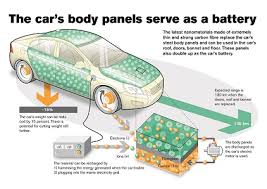The automotive world is undergoing a seismic shift as cutting-edge technologies redefine how we approach driving. With innovations aimed at improving safety, efficiency, and environmental sustainability, the future of driving is poised to be dramatically different from what we know today. From autonomous vehicles to advancements in connectivity, these technologies promise to revolutionize our roads and reshape our relationship with vehicles.
Autonomous Driving: The Dawn of Self-Driving Cars
One of the most transformative advancements in automotive technology is the development of autonomous driving systems. What once seemed like science fiction is rapidly becoming a reality, with companies like Tesla, Waymo, and Mercedes-Benz leading the charge. These vehicles utilize a combination of sensors, cameras, radar, and artificial intelligence to navigate roads without human intervention. Autonomous cars promise to make driving safer by reducing accidents caused by human error, which accounts for over 90% of traffic incidents worldwide.
While fully autonomous vehicles are still in development, many cars already feature semi-autonomous capabilities, such as adaptive cruise control, lane-keeping assist, and self-parking systems. These technologies are gradually building consumer trust and paving the way for a driverless future. However, challenges such as regulatory approval, public acceptance, and the need for robust infrastructure remain significant hurdles. Despite this, the potential for autonomous vehicles to transform urban mobility and reduce congestion is undeniable.
Electric Vehicles: Driving Towards Sustainability
The push for environmental sustainability is another driving force behind the evolution of automotive technologies. Electric vehicles (EVs) are at the forefront of this movement, offering a cleaner alternative to traditional internal combustion engines. Advances in battery technology have significantly improved the range, efficiency, and affordability of EVs, making them more accessible to the average consumer.
Governments worldwide are incentivizing the adoption of EVs through subsidies, tax breaks, and the establishment of extensive charging networks. Major manufacturers such as Tesla, Nissan, and Volkswagen are investing heavily in electric technology, while legacy automakers like Ford and General Motors are transitioning their fleets toward electrification. Additionally, innovations in fast-charging technology and wireless charging pads are addressing one of the primary concerns of EV adoption: charging time and convenience.
As renewable energy sources become more prevalent, the integration of EVs into the grid is expected to further reduce carbon emissions. This shift not only addresses climate change but also promises quieter cities and reduced dependence on fossil fuels.
Connectivity and the Internet of Things
Connectivity is revolutionizing the way vehicles interact with their surroundings and with drivers. The integration of the Internet of Things (IoT) into automotive systems enables cars to communicate with one another. Infrastructure, and even smart devices. This connectivity enhances safety, efficiency, and convenience, paving the way for a more integrated driving experience.
One notable advancement is Vehicle-to-Everything (V2X) technology, which allows cars to share information about traffic conditions. Hazards, and road signs in real-time. For instance, a car equipped with V2X could warn drivers of an accident ahead. Suggest alternate routes, or even synchronize with traffic lights to optimize fuel efficiency. Additionally, connected vehicles can offer over-the-air software updates. Ensuring that the latest features and security patches are always available.
Connectivity also enhances the in-car experience, with modern infotainment systems offering seamless integration with smartphones, voice assistants, and cloud-based services. These features not only make driving more enjoyable but also improve productivity during commutes.
Artificial Intelligence and Predictive Maintenance
Artificial intelligence (AI) is becoming a cornerstone of automotive innovation, enabling smarter and more responsive vehicles. AI-powered systems can analyze vast amounts of data to improve decision-making, enhance navigation, and personalize the driving experience. For example, AI can predict a driver’s preferred routes, suggest energy-efficient driving techniques, and even identify potential mechanical issues before they occur.
Predictive maintenance is a particularly impactful application of AI in the automotive industry. By monitoring vehicle performance in real-time, AI can detect signs of wear and tear, alerting drivers to necessary repairs before they become critical. This not only reduces downtime and repair costs but also enhances safety by preventing breakdowns on the road.
The Challenges Ahead
Despite the exciting prospects of emerging automotive technologies, there are several challenges to overcome. The transition to autonomous and electric vehicles requires significant investments in infrastructure, such as charging stations and smart traffic systems. Moreover, concerns about data privacy, cybersecurity, and the ethical implications of AI decision-making must be addressed to ensure public trust.
Additionally, the cost of implementing these advanced technologies remains a barrier for many consumers. As manufacturers strive to balance innovation with affordability, it will take time for these advancements to become mainstream.
The future of driving is a thrilling convergence of innovation, sustainability, and connectivity. Autonomous vehicles, electric cars. AI-driven systems are set to redefine how we navigate the world, making driving safer, more efficient, and environmentally friendly. While challenges remain, the pace of technological progress suggests that these visions are closer to reality than ever before. As we stand on the cusp of this new era, the road ahead promises a journey unlike any other one that is smarter, greener, and more connected.
